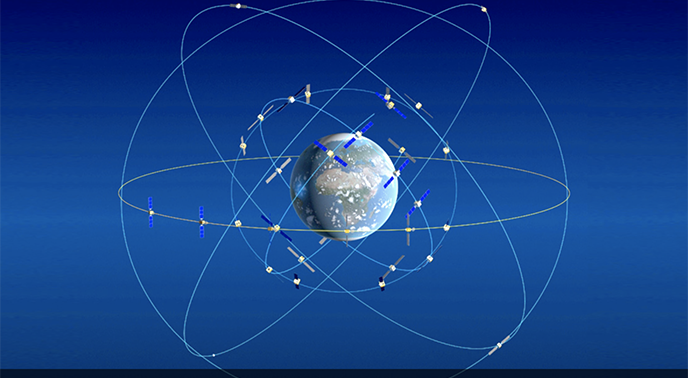
New technologies are emerging to fill the gap left by GNSS services whose signals cannot penetrate indoor spaces. Using everything from triangulation and flickering light bulbs to the Earth’s magnetic field, start-up companies are lining up to help brick-and-mortar retailers beat back their online competition with location-inspired service.
New technologies are emerging to fill the gap left by GNSS services whose signals cannot penetrate indoor spaces. Using everything from triangulation and flickering light bulbs to the Earth’s magnetic field, start-up companies are lining up to help brick-and-mortar retailers beat back their online competition with location-inspired service.
Retailers “are trying to turn their stores into showrooms” and use location-based data to connect with and influence customers who might otherwise peruse their shelves then go order the products online, said Dan Ryan, co-founder and CEO of location start-up ByteLight. “[Retailers] have identified location as a top priority.”
“I think people want to be treated as clients as opposed to customers,” said John Fisher, co-founder of the Toronto, Ontario, Canada-based company DMTI Spatial, which provides “enterprise location intelligence solutions.”
Consumers want stores to offer goods and services tailored to them, Fisher said. The more firms can use information “to provide better and more pointed service to individuals, the better we can achieve that.”
Cambridge, Massachusetts-based ByteLight offers software that modulates LED lights, turning them into information beacons. It licenses the software to LED manufactures and sells a software platform that can be integrated into any mobile app to provide real-time location data accurate to within a meter.
“The software basically modulates the LED light,” explained Ryan. “It will actually interact with the LED and the light will be flickering on and off so fast that your eye cannot see — but in a way that we can detect using by the camera in any smart phone.”
The technology’s meter–level accuracy is the “Holy Grail” for indoor location, said Ryan.
“At that level of accuracy you are going to enable a whole new ecosystem of apps and, particularly in retail, you’re going to enable CPGs (consumer product goods) and brands to reach directly to consumers,” Ryan told Inside GNSS. “The first phase of location was focused on the retailers themselves. The next phase of location is going to be focused on brands and CPGs.”
It’s not just small firms that are scrambling for a place in the retail location market. Apple underscored its interest in the space with the purchase earlier this year of WiFiSlam in a deal reportedly valued at $20 million. According to thenextweb.com WiFiSlam uses a combination of WiFi and GPS signals to derive location information and develop more accurate maps — particularly indoor maps.
Apple is also offering iBeacons on the latest versions of the iPhone. Reports suggest the technology enables beacons, placed anywhere inside a retail space, for example, to transmit information to an iBeacon-equipped iPhone using Bluetooth low energy (BLE) communications technology. The advantage for Apple, beside the fact that a great many phones have Bluetooth, is that many of the iPhones sold over the last two years reportedly need only a software upgrade to become iBeacon capable.
Perhaps the firm with the most ambitious plans, however, is Finland-based IndoorAtlas. The company released its first app at Advertising Week in September in New York. The software uses the distortions in the Earth’s magnetic field caused by the steel in a structure to pinpoint a smart phone user inside the structure.
IndoorAtlas can locate someone with the app to within a meter, said Wibe Wagemans, the firm’s U.S representative. “With WiFi, for example if you are in a lab situation you might get WiFi accuracy down to maybe 7 to 12 meters — in perfect conditions and that would require what they call WiFi triangulation. That would not work with the WiFi that is inside buildings today. You would need to install completely new hardware. For large buildings those installations will cost way over $100,000 per building.”
IndoorAtlas has its own challenges, however, specifically that retailers need to map their store’s geomagnetic field in order to use the app to locate customers.
“Right now we do need the floor plans and the magnetic maps. But the partners that we have spoken to say, for them, it is not a big hurdle at all,” said Wagemans. “We are speaking to retailers with a few thousand stores and they say that the cost to magnetically map all the thousands of stores is insignificant compared to all the other solutions out there, including Bluetooth and WiFi.”
Wagemans suggested, however, that having building maps might not always be an issue. He said IndoorAtlas could use indirect crowd sourcing or SLAMing (simultaneous localization and mapping) to trace the layout of unmapped buildings fairly quickly.
You have the application running in the background, explained Wagemans, where it “kind of sniffs out where you are.” You derive a map of the building as you go based on the data gathered along the way. If you can combine data from a number of users through the cloud — the technique used by the Waze app to track traffic conditions and map roads — you can develop maps of buildings all over the world fairly quickly, he asserted.
“A retailer would say ‘Hey, my app has millions of users,’” said Wagemans, “And while these users are roaming my store, I know where they are going. I can grab their magnetic field data — if I get their permission, their opt-in — and as a result I can build maps and floor plans. And, even [if things get moved around], the magnetic maps will automatically be updated because I have people in the store and I get the latest real-time information.’”
You could take this approach global if you could incorporate the IndoorAtlas app into the work of a mapping firm that is constantly developing new maps, said Wagemans, “you would have most of the buildings in the world covered” in fairly short order.
When asked if IndoorAtlas was currently working with a mapping company in this way, Wagemans said he could not disclose that.
“We are talking to players in several verticals but I cannot disclose any names,” he said, adding, “Eventually our goal is to become the GPS of indoors.”
An article in the current issue (September/October 2013) of Inside GNSS, written by John Raquet of the Air Force Institute of Technology, discusses some of the other technologies being explored to achieve “ubiquitous positioning.”





